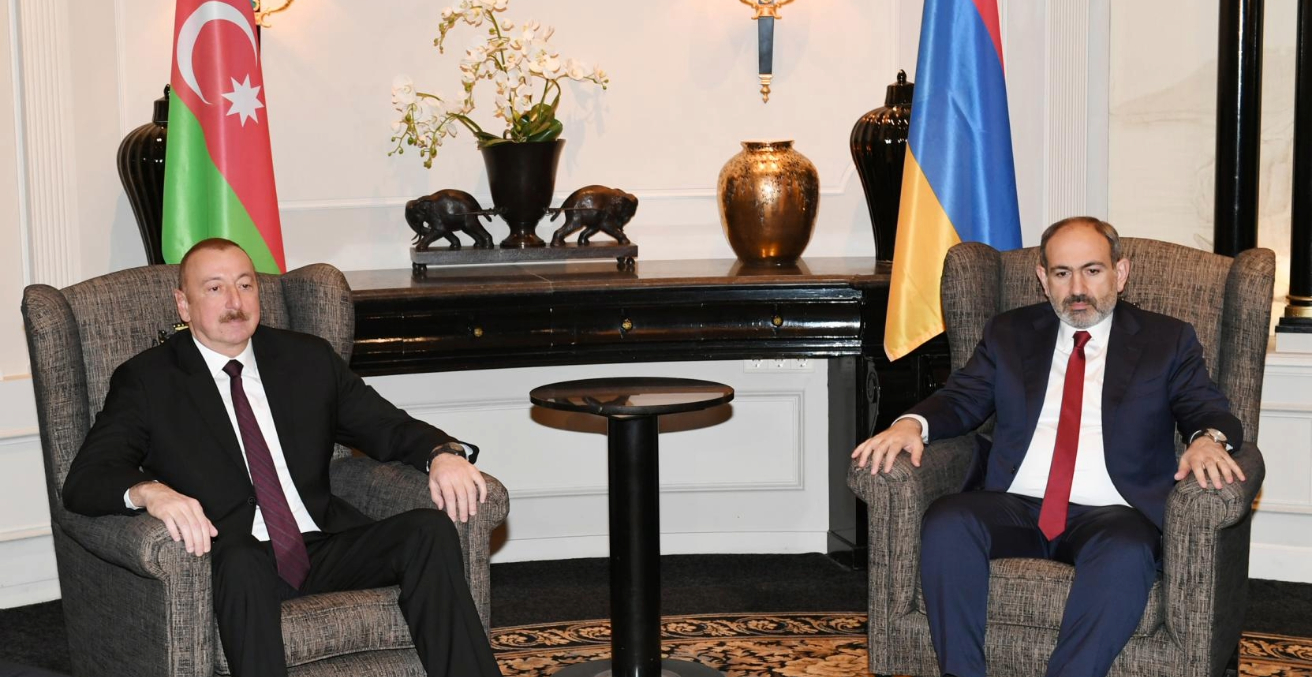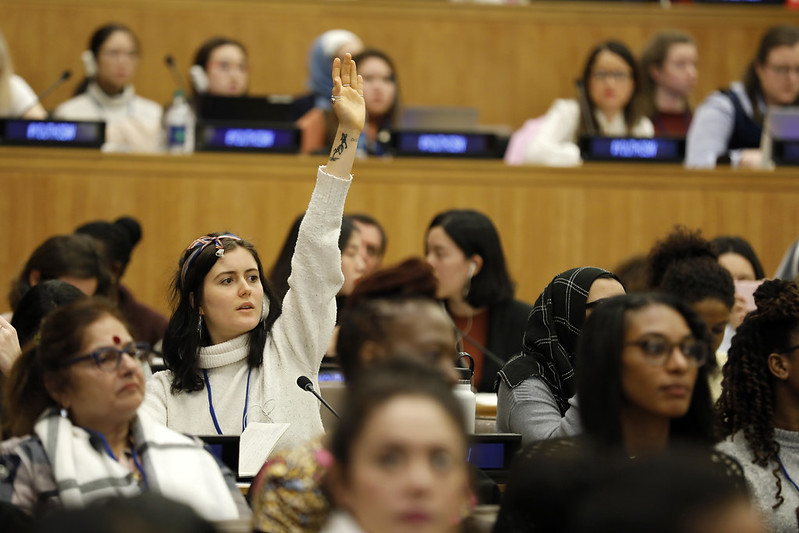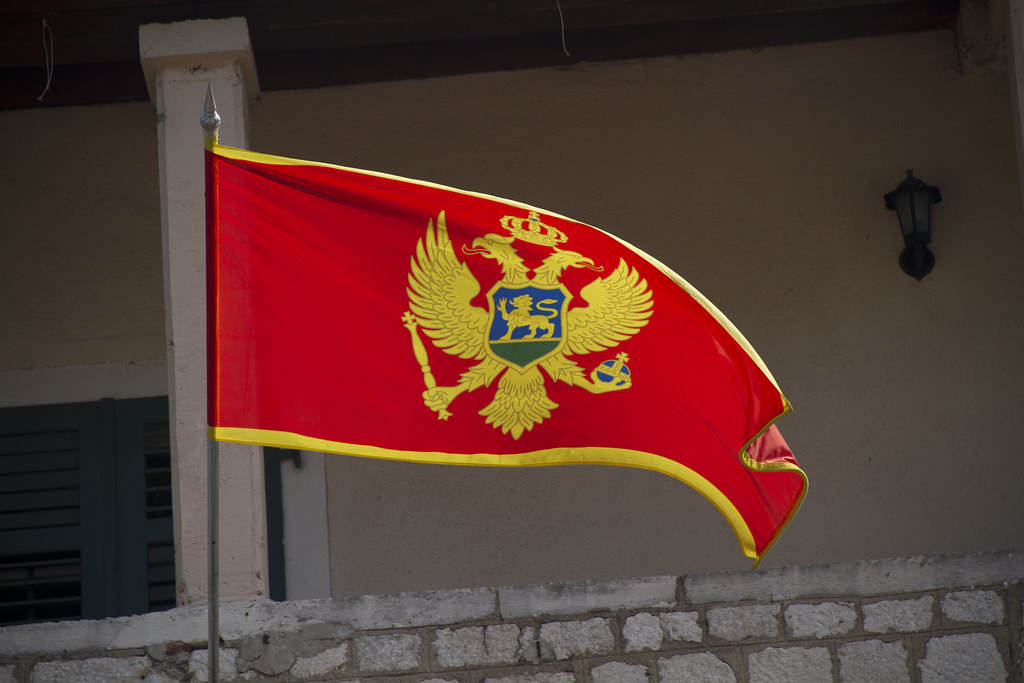On 8 August the presidents of Azerbaijan and Armenia met in the White House. The agreement they signed is a step towards ending to the longest-running conflict in the former Soviet Union and may open new trade routes across Eurasia.
Donald Trump touts himself as a deal maker. But it is unlikely that even he had brokering a peace plan between Armenia and Azerbaijan on his bingo card for 2025. The two republics in the Caucasus have been in conflict since before the collapse of the Soviet Union in 1991.
Yet, in the White House on 8 August, alongside Trump, Azerbaijan’s President Ilham Aliyev and Armenian Prime Minister Nikol Pashinyan signed a joint declaration aimed at fostering peace and closer relations between their respective states. The declaration outlined goals of enhancing transportation links and communication to promote harmony, stability, and prosperity for Armenians and Azerbaijanis. The agreement is not legally binding, but it marks an important step in bringing an end to the longest-running conflict in the former Soviet sphere.
Trump described the move as “historic,” while Aliyev declared that Trump had effected a “miracle,” and Pashinyan declared it a “significant moment.” A key element of the agreement will be the creation of an American-controlled transport route across Armenian territory linking Azerbaijan with its separate Nakhchivan exclave, to be known as the Trump Route for International Peace and Prosperity (TRIPP).
The Armenia-Azerbaijan confrontation dates back to 1988 when Armenians made moves to secure Nagorno-Karabakh, an Armenian-majority territory within the then Soviet-controlled Azerbaijan Socialist Republic. Even as Armenia and Azerbaijan won independence from the Soviet Union, hostilities erupted, with both sides committing human-rights abuses. The Armenians emerged victorious in 1994, establishing an autonomous political entity they called Artsakh in disputed Nagorno-Karabakh, but Azerbaijani grievances continued to simmer and the conflict was regarded as frozen, rather than resolved.
Aside from defusing the military confrontation, the new declaration will shift the geopolitics of Eurasia. Tellingly, in orchestrating this deal, America has stolen a march on Russia, whose regional clout is rapidly receding in the south Caucasus, a region it has long coveted—and dominated since the late 18th century. Moscow is bogged down in Ukraine, thus is less able to wield its influence, while Russia’s relationship with Azerbaijan has deteriorated since the 2024 downing of an Azerbaijan Airways flight and reports of harassment and mistreatment of Azerbaijanis in Russia.
The agreement is also set to accelerate Armenia’s move towards the West. Nikol Pashinyan’s government appears determined to disentangle itself from Russia’s embrace. It has recently sought accession talks with the European Union, signed a strategic partnership agreement with the United States, and is readying itself to quit the Russian-led Collective Security Treaty Organization.
As Russia recedes, opportunities for America arise in Eurasia. By circumventing Russian infrastructure networks, the TRIPP will give the US and the EU greater access to trade in Central Asia and the Caucasian states. The resulting Middle Corridor trade route is set to complement China’s Belt and Road Initiative and will reduce transit times for goods between industrial hubs in China and European markets. Yet, some have proposed the corridor as a way of outpointing China as well as Russia. Beijing will take a dim view of such a proposition, much as it will be disappointed if Armenia and Azerbaijan, both of which are dialogue partners with its Shanghai Cooperation Organisation, forge stronger relations with the US and Europe.
Geopolitical dynamics will also shift in western Asia. It is likely that Türkiye will open its border with Armenia, further expediting trade across Eurasia. Ankara slammed shut the Türkiye-Armenia border in 1993 in solidarity with Azerbaijan, with which it boasts of a fraternal relationship, over Armenian advances in Nagorno-Karabakh. But to the south, Iran will be concerned at the prospect of America controlling the TRIPP, which will extend 32 kilometres along its northern border. And like Russia, Iran will not welcome closer engagement between the US and Armenia, with whom it has maintained warm relations even as Tehran becomes more isolated internationally.
The agreement that Pashinyan and Aliyev initialled in the White House comes after months of US mediation, and after a lightning Azerbaijani campaign in 2023 that saw the Armenian population of Nagorno-Karabakh flee en masse. Despite humanitarian concerns for the expelled Armenians, these events acted as a circuit-breaker in the frozen conflict. Azerbaijan, the dominant power in the south Caucasus due to its energy reserves and military support from Türkiye and Israel, felt that historical wrongs had been righted. Aliyev was willing to pursue peace, while Pashinyan also saw an agreement as a necessary step to wriggle free of Russia’s grasp. Further consoling Pashinyan will be the fact that a peace declaration should put an end to irredentist thoughts among certain Azerbaijani actors.
Warming relations may also bring an end to the rampant nationalist rhetoric and confrontation that has poisoned relations in the south Caucasus since the 1980s. Scholar of the Caucasus Thomas de Waal argues that the collapse of the Soviet Union spurred a stampede to define distinct identities and demarcate “homelands” by the peoples of the region. In so doing, Armenians and Azerbaijanis ignored and denied the fact that they had lived side-by-side for centuries. Noted for its demographic complexity, the Caucasus has long been a place of cultural cross pollination, as exemplified in the figure of Sayat Nova. The 18th century troubadour is revered as the national poet of Armenia but he composed much of his verse in the Azeri language, writing it in the Armenian and Georgian scripts.
Trump has declared that Armenia and Azerbaijan have resolved to stop fighting “forever.” There is still much to be debated and agreed to before a formal peace deal can be signed. And one should be circumspect about Trump’s utterances. Recall that in 2019 he claimed to have engineered peace between the Syrian Kurds and Türkiye at the very moment he had abandoned the Kurds. Nonetheless, the Armenian-Azerbaijani agreement is a very welcome development in a troubled corner of the world.
Dr William Gourlay teaches international relations and Middle East history at Monash University, where he completed his PhD, an examination of Kurdish identity in Turkey. He has previously worked as a teacher, journalist and editor in İzmir (Turkey), London and his native Melbourne and a researcher at the Middle East Studies Forum at Deakin University. He researches and writes on the history, arts and society of Turkey and its neighbours and is the author of The Kurds in Erdogan’s Turkey.
This article is published under a Creative Commons License and may be republished with attribution.





